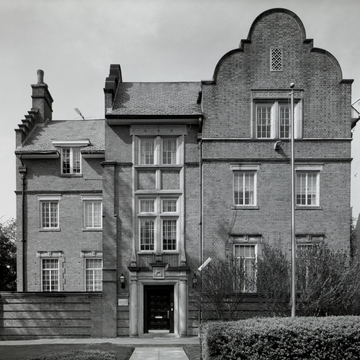You are here
Embassy of Korea, Chancery
Enclaves of late Arts and Crafts houses inspired by English Neo-Tudor architecture dating from the 1920s and 1930s are rare within the city boundaries. Few examples are as beautifully designed or sited as the Stanley residence. Originally set within a miniature
Writing Credits
If SAH Archipedia has been useful to you, please consider supporting it.
SAH Archipedia tells the story of the United States through its buildings, landscapes, and cities. This freely available resource empowers the public with authoritative knowledge that deepens their understanding and appreciation of the built environment. But the Society of Architectural Historians, which created SAH Archipedia with University of Virginia Press, needs your support to maintain the high-caliber research, writing, photography, cartography, editing, design, and programming that make SAH Archipedia a trusted online resource available to all who value the history of place, heritage tourism, and learning.














